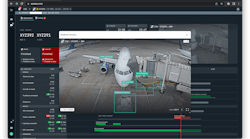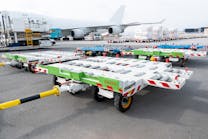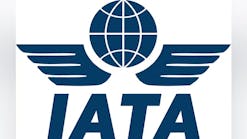AI-Driven Optimization for Smaller and Medium-Size Airport Operations
GS RegionMaster from INFORM was specifically designed to support airline regional managers. The software, which has a web-based user interface, enables regional managers to monitor disruptions or irregularities at smaller and medium-size operations across their network in real time from one screen.
Tasked with detecting and correcting irregularities in the ongoing operation of stand allocations, airline regional managers using GS RegionMaster no longer need to intermittently review individual stations, one by one, says Uschi Schulte-Sasse, SVP, Aviation, INFORM.
“Users can now monitor their entire network in one view and will receive notifications when disruptions or irregularities are detected at a specific airport. This immediate and proactive guidance gives personnel the ability to intelligently solve problems before they occur,” says Schulte-Sasse.
Daily operations are more and more challenged with complexities, irregularities and disruptions, she says. They include delays, defects and increasing severe weather conditions.
“But time is still critical in flight management,” she continues. “If a flight is arriving early and an outgoing flight has been delayed, GS RegionMaster will alert the region manager to immediately navigate the incoming flight to an alternative parking position, saving wait time on the apron, avoiding further delays and supporting more effective resource management.”
Currently, GS RegionMaster is being put into operation with a pilot customer.
While airlines may be the primary buyers of the software, Schulte-Sasse says ground service providers that service airlines may also benefit from an improved task management program and steadier utilization of their GSE fleet and staff.
Part of the GroundStar Product suite, GS RegionMaster is based on INFORM’s original core product GS RealTime Stands & Terminal, which caters to the complexities of larger operations found at airline hubs. The size of an operation – not the airport – determines which software is more applicable.
Both provide airlines greater insight into the stand management of their network.
However, Schulte-Sasse says GS RegionMaster has a more focused set of functionalities that takes away complexities and simplifies the implementation process.
“Still, it allocates and monitors stand assignments and delivers a transparent view of the situation on each airport in real time,” she adds. “This supports airlines’ regional managers in achieving smooth and efficient airport operations.”
According to Schulte-Sasse, the benefits of GS RegionMaster include “unparalleled operational efficiency and reliability. ”
“When disruptions occur,” she says, “a quick response with the best use of existing resources can be made.”
Without GS RegionMaster, Schulte-Sasse says stations are managed manually – without software support – or with static software solutions that require a lot of manual interaction. In addition, every airport operation is managed individually.
“With GS RegionMaster, many airports of the airline’s network can be monitored and managed at once, focusing on management by exception,” says Schulte-Sasse.
INFORM Digital Decision Making is based on hybrid artificial intelligence (AI), which includes both know-how-driven AI and data-driven AI.
“GS RegionMaster uses all data known to the application. This includes real-time flight information, the airport infrastructure and agreements on parking positions with the respective airport operators,” explains Schulte-Sasse.
Initially, the setup of the airport and the usage of the infrastructure is configured by INFORM and/or the airline.
The real-time flight data can be provided by the airline itself via an interface. Alternatively, INFORM offers the provision of real-time flight data through a partnership with FlightAware.







